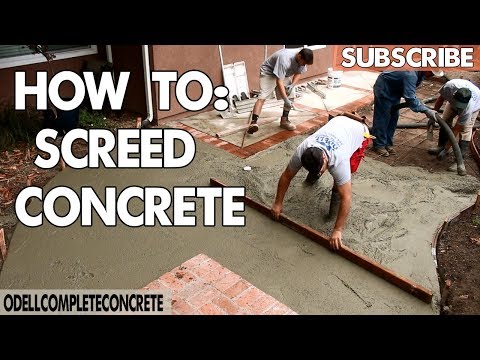Kirk Giordano is a favorite YouTuber here at ProTradeCraft—and not just because he can repair broken concrete retaining walls. We've featured him multiple times in the past:
- Stucco Repair: How to Close That Can of Worms You Just Opened
- How To Fix Someone Else's Caulking Repair in Stucco
- Roof to Wall Stucco Flashing Repair
And we're doing it again today, where he surreptitiously fixes a broken concrete retaining wall next door to the job he is working on. The owners do not know he is doing it, nor did they ask him to. He wonders, when they get home will they think:
- "Oh, No. Someone fixed the wall, and now I have to paint it to match!"
- "Cool Beans, someone fixed the wall!"
We may never know the answer to that question, but we do know this: How to fix a broken concrete retaining wall.
The process to repair broken concrete walls "breaks" down like this: Mix up some fast-setting concrete, make a big ball out of it, throw it at the hole, and smooth it over. But first, remove the loose pieces and clean the remaining parts.
Clean existing masonry with a wire brush and then apply a bonding agent
"It doesn't matter which bonding agent you guys use, but it's got to have some kind of a mechanical bond. This stuff is blue, so I can see if I missed a spot..."
With the hot mud in a bucket, Kurt makes meatballs and "throws" them into the holes.
It is important to use the right cement mix. Rapid Set, sold at Home Depot and Lowes, is great because it "sets rapidly."
It is also important to wear gloves because—you should know this by now—concrete is caustic and can burn through your skin.
Use a trowel to smooth the concrete
Switch to a trowel and float the top. Next, float the sides and wait for the mix to set. He uses a hawk set against the wall to use as a guide for shaping corners. After the concrete is set up, he switches to a sponge float with a handle.
A sponge trowel feathers the repair into the broken concrete wall
Where the concrete is heavy (thick), he uses a dry sponge float. Not bone dry, wetted, and rung out, so there is little water in the sponge float. For the edges, where concrete is thinner, he keeps more moisture in the sponge. Spend a little time feathering the patch into the existing work and then paint to match if that's what is needed to match the existing work.
And THAT is how the Master of Plaster teaches how to repair broken concrete retaining walls.











